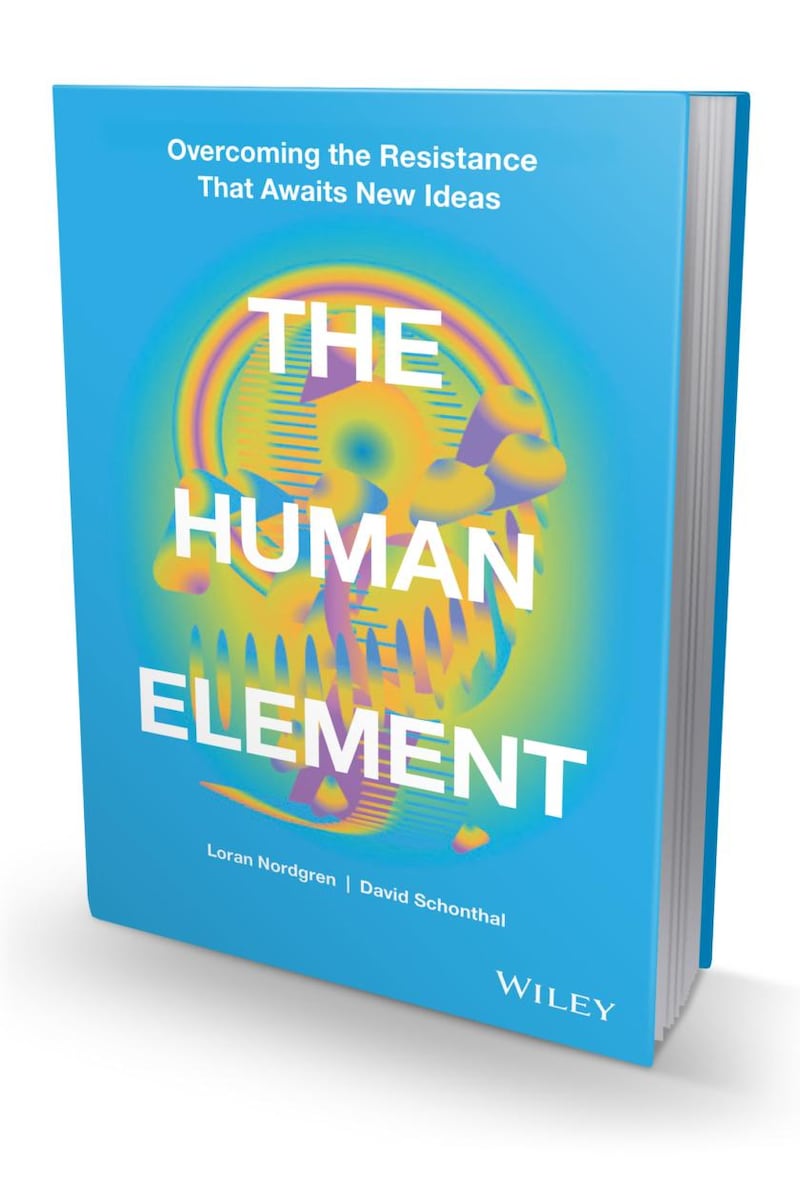Too much effort is wasted in adding features and benefits to new ventures to make them seem more attractive, rather than addressing the barriers that make people resist innovative ideas and models. Entrepreneurs are more likely to enjoy success if they focus on solving the frictions rather the fuel components in a new venture.
That’s the view of David Schonthal, professor of strategy, innovation & entrepreneurship at the Kellogg School of Management and coauthor of The Human Element: Overcoming the resistance that awaits new ideas.
“People under-weigh simplicity as an aspect of product design. A lot of designers think about their product as the hero instead of the progress you want to help others make. Just because you can do something doesn’t mean you should,” he tells The Irish Times.


People tend to think in terms of a Swiss Army knife approach, appealing to a wide range of customer segments, he says. But in this instance for all the functionality or fuel as he refers to it, what you get is a penknife that is not especially good and a corkscrew and numerous other attachments that are no better than average. Software designers, amongst others, also fall into this trap, often adding numerous features that users do not value and in the process make their products unnecessarily complex.
Schonthal is one of the originators of friction theory, a set of ideas about the barriers to success and how to overcome them.
This theory proposes that there are four core frictions innovators need to overcome. Firstly there is inertia which is the powerful desire to stick with what we know. Then there is effort – how difficult is it to implement? Emotion is a third friction – do people feel threatened? Finally, there is reactance – do people feel pressure to change?
Frictions are often difficult to spot, he concedes. People are strangers to themselves and so frictions are “twice hidden”, he says.
Consider the following experiment. A US social care body that was involved in sending supportive cards to hospitalised children wanted to increase the number of volunteers from the 18 per cent of people who responded to this request. Three separate techniques were tried with different groups.
The first received quotes from children, explaining how much the cards meant to them. The second group were offered a small payment for each card sent. The third group were given templates to assist them in deciding what to write.
The first two approaches barely moved the needle and the psychological nudges failed. In the group given the templates, however, responses rose by 60 per cent. The researchers discovered that people were resisting not because they did not think it was a worthy cause but because they did not know what to write and feared writing inappropriate messages.
“The uncertainty was a friction that defused the tactics designed to fuel change. Giving people templates removed the friction and the behaviour changed,” Schonthal says.
The US government’s public bond-buying campaign to fund its efforts in the Second World War provides another interesting example of how to move the needle. It found its most effective poster message was not one of the heart tugging ones about supporting the plucky troops nor the ones demonising the enemy, having tried both. Instead, the one that worked best was one instructing the public to buy bonds when the solicitor in their workplace approached them to do so.
Frictions are difficult to spot because they require empathy, he says. They require that you understand your audience and see things from their perspective. To understand friction you need to change the spotlight from the idea to the audience.
In the book Schonthal notes the exceptional performance of a Michigan car salesman called Ali Reda, who sells an average of 132 cars a month at the Les Stanford Chevrolet and Cadillac in Dearborn. A typical salesperson, by contrast, aims to sell 20 in a good month.
Reda eschews traditional hard-sell approaches and actively listens to customers. Sometimes he tells them to wait a couple of months as there will be more attractive terms available then and sometimes he sends them down the road to a rival dealership where he knows they will get a better offer. On occasions he has even talked customers out of the idea of buying a new car. His tactics work.
“Removing distrust from the car buying experience creates great loyalty. Customers tell their friends. Each day people walk into the dealership wanting to buy a car from Ali because a friend insisted they talk to him before going somewhere else.”
Another interesting observation from Schonthal is that in customer interactions, fuel-based tactics designed to exceed customer expectations don’t build loyalty. Reducing hassle does. “The question shouldn’t be how do we delight the customer, it should be how do we make customer interactions easier,” the author says.
South Africa’s Nedbank understood this when it introduced its “ask once” pledge, promising customers that they would not be bounced around the organisation when they raised a query.
Removing obstacles and frustrations has obvious dividends. New Zealand is ranked as the easiest country in the world to set up a new business. It involves one form and takes about four hours. Contrast that with Chad, towards the bottom of the list, where approval from nine agencies is required in a process that takes an average of 62 days. Little wonder then that entrepreneurial activity in New Zealand is four times the level of countries in the second half of this league table.
For a new idea to gain hold it is important to move at a pace the target audience is comfortable with. Schonthal cites the chief technology officer of the firm Public Digital who says, in his experience, the secret to getting established organisations to change is to start small. He avoids he term “digital transformation” in early conversations and shrinks the scope of objectives to one specific project that, if successful, would demonstrate the value of taking a digital-first approach. If this succeeds, it acts as an inspiration to take the process further.
Reinforcing an idea over time and allowing an idea to seed also works. The concept that repetition makes it true has only recently been scientifically demonstrated to be true but powerful and influential leaders have understood this for millennia and have sometimes used this approach for nefarious purposes.
Another tactic to overcome friction is the use of relativity. Smart restaurant owners and their sommeliers, for example, have long known that a €50 bottle of wine on a menu will not look so expensive if other bottles are priced closer to the €100 mark.
Making innovative ideas acceptable
Add time: Increase the amount of time between when people learn about an idea and when they must decide on an idea. The more time people have to consider an idea, the more familiar it feels.
Repeat and repeat again: Repeated exposure to an idea increases familiarity. Find opportunities to continuously seed the idea
Take it slowly: When an innovation calls for people to embrace a very different model or way of operating, small steps help people to acclimatise to change
Keep familiar elements: Innovation requires doing things differently but that does not mean that every aspect has to depart from the status quo.
Match with your audience: Mirroring or adapting the same language and style as the audience you are trying to influence, heightens perceived familiarity.
Use analogies: If people are not familiar with your concept, frame it in a comparison with something they can relate to, for example "It's Airbnb for dogs".
The Human Element, overcoming the resistance that awaits new ideas by David Schonthal and Loran Nordgren is published by Wiley










